CarEdge saved me over 4,500 dollars on a brand new Honda Pilot. I can't say thank you enough.
Price intelligence
Find a wide range of vehicle listings with market insights on new and used listings near you.


Help us personalize your CarEdge experience — it only takes a second.
Your answers help us personalize your CarEdge journey — we’ll follow up with tips and next steps that match your buying timeline.
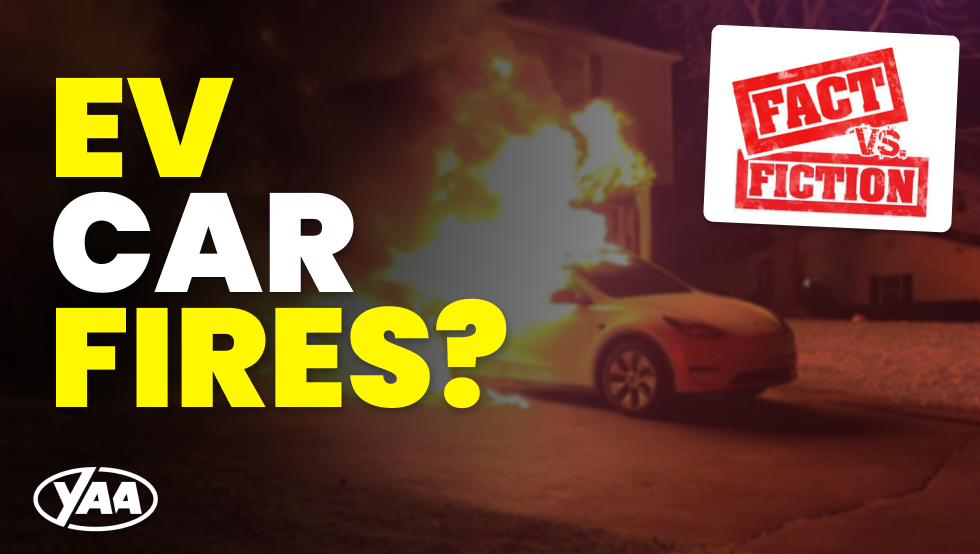
The Chevrolet Bolt’s recent fall from grace has had many EV-curious drivers wondering if EVs are even safe to drive. A quick look at US vehicular fire data makes it clear that car fires were a problem long before EVs (hey Ford Pinto!), but EVs do bring new challenges to automotive safety. Any material that can store enough energy to power a car, whether batteries or gasoline, is capable of volatility and potential safety hazards. However, a closer look at the statistics reveals surprising trends and comparisons. Will the dozens of EVs coming to market in 2022 face the same issues of older models? It’s important to get to the bottom of this. Your advocates at CarEdge will keep you informed with the latest information. Here’s what we know.
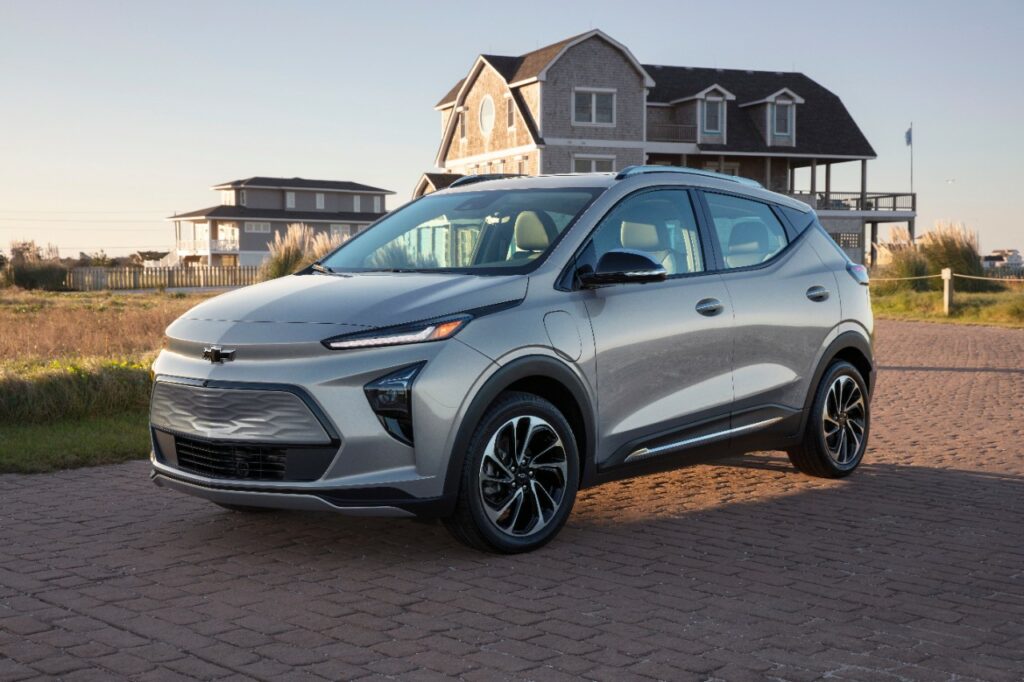
Data compiled by the National Fire protection Association (NFPA) and the US Department of Transportation shows that among all vehicle types, there’s an average of one vehicle fire per 19 million miles driven. Both the NFPA and the Center for Auto Safety say there is not yet a centralized database for electric vehicle fire statistics. In an effort to address the lack of information surrounding EV battery fires, Tesla decided to begin releasing statistics in their annual impact reports.
Tesla’s 2020 Impact Report says that from 2012-2020, there’s been one Tesla fire per 205 million miles traveled. The fact that Tesla models made up 79% of American EV sales in 2020 highlights the relevance of their data. Unfortunately, other automakers haven’t released comparable data (we’re looking at you GM!). We’re hopeful that will change soon.
This comparison doesn’t hide the fact that some EV models have had major problems. Most notably, the ongoing Chevrolet Bolt recall is costing GM and battery supplier LG a few billion dollars to resolve. The Hyundai Kona briefly made headlines with multiple fires. It seems like every Tesla fire makes it into the news. Henrik Fisker’s first shot at launching an automotive brand ended in tears when Hurricane Sandy flooded dozens of early Karma’s with saltwater, resulting in some setting ablaze. EV fires are real, and every one is serious and worthy of proper investigation.
An in-depth study of EV battery fires conducted by the NTSB found that most incidents are caused by a dangerous phenomenon known as thermal runaway. All modern electric vehicles have a thermal management system of some sort. Thermal management keeps the battery operating within the ideal range for performance and safety. Some thermal management systems use liquid coolants, others employ air or refrigerant coolants. But these systems are only designed to work during normal operating conditions. When a battery is punctured or contains manufacturing defects, a short circuit can occur when the anode and cathode come in contact. A shorted circuit can cause rapid thermal runaway. Simply put, if a damaged or defective battery malfunctions, it produces a lot of heat, and may result in a fire.
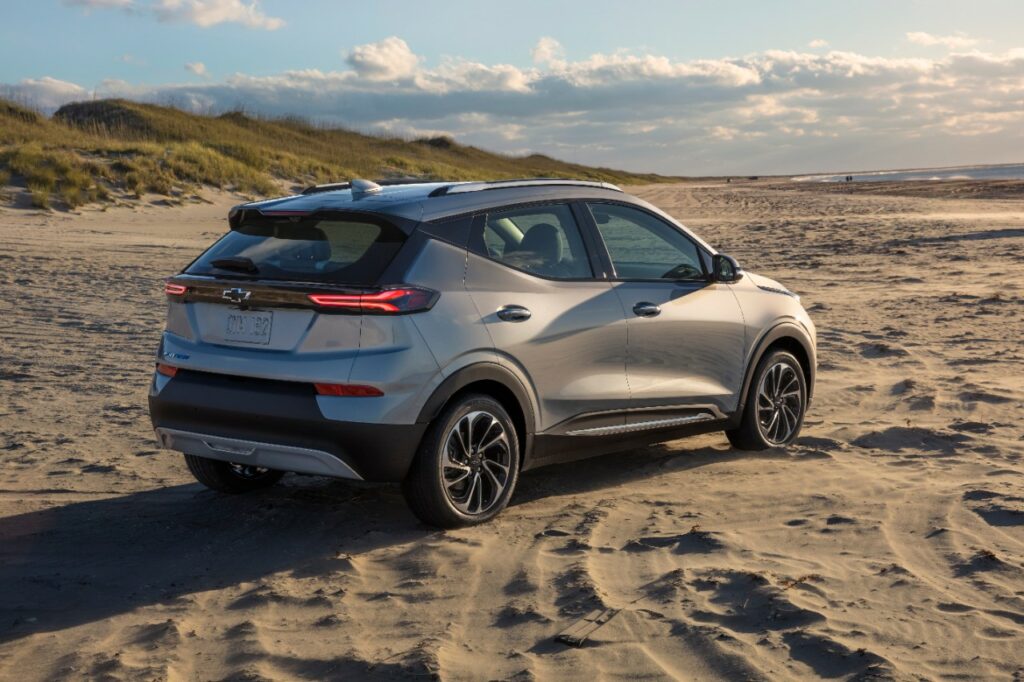
A spokesperson for LG, the battery supplier for the Bolt, shared the cause of the recent fires with Consumer Reports. “GM and LG have identified the presence of two rare simultaneous defects, found in the same battery cell, made during the module manufacturing process.” GM explained that the cause is a torn anode tab and folded separator within the batteries. What it comes down to is two very rare defects simultaneously occurring in the same battery cells.
As of December 2021, GM is just beginning the recall process. Owners of 2017-2019 Bolts will receive an all-new battery pack. Affected 2020-2022 cars will receive replacement batteries for the affected modules. Will the fix take care of the hazard once and for all? Considering the massive engineering effort that has gone into identifying the problem and proposing a solution, Chevy Bolts will likely have undergone even more safety checks than most cars are ever subjected to.
Anytime a Tesla goes up in flames, it’s sure to make the news. But how common are Tesla fires compared to combustion vehicle fires? Engineers (and nervous investors) have looked into every incident, and here is what they’ve found. GLJ Research analyst Gordon Johnson found reports of about 160 Tesla vehicle fires as of 2020, when there were 1 million Teslas on the road globally. That works out to about 0.01% of Teslas being involved in fire incidents, a figure that is less than most other OEMs.

The high publicity of Tesla’s isolated fire events prompted the automaker to address the topic directly in their own 2020 Impact Report. Tesla says there has been approximately one Tesla vehicle fire for every 205 million miles traveled. The report goes on to point out that analyses of combustion-powered vehicle fires conducted by the National Fire protection Association (NFPA) and U.S. Department of Transportation shows one fire for every 19 million miles travelled. As Elon Musk once spouted on his infamous Twitter account, “Not super surprising, given that internal combustion engine cars literally have ‘combustion’ in their name.”
Perhaps one reason Tesla has avoided the major recalls that the Chevy Bolt, Hyundai Kona and some hybrids have faced is the fact that Tesla regularly pushes over-the-air updates to all of their cars. If a thermal management issue is ever discovered by their engineers, for example, it would most likely be solved with a quick software update. Most automakers have yet to implement OTA updates at this level of precision, but Ford, Volkswagen and even GM are coming around to the idea.
Although the data clearly shows that EVs are less prone to car fires than combustion vehicles, there are major safety concerns for the firefighters who extinguish the flames when an EV fire does occur. Firefighters need special training to learn how to safely approach EV-related incidents, but only two-thirds of departments have had the opportunity due to funding constraints.
EV battery fires require A LOT more water to extinguish. Tesla’s First Responders Guide recommends 3,000 to 8,000 gallons of water on hand to put out a Tesla fire. Some fires have needed 30,000 gallons of water to extinguish. Basically, firefighters have to do whatever it takes to cool down the battery, and that’s really hard to do with so much energy densely packed into the pack. Once the fire appears fully extinguished, there’s a chance it could still flare up, even days later. Towing services and junkyards are advised to park damaged electric vehicles at least 50 feet from other vehicles in the yard. As EVs become more popular, that might not be feasible in just a few years.
The National Transportation Safety Board’s (NTSB) review of emergency response guidelines from 36 EV manufacturers found that all had ways to mitigate the risk of high-voltage shocks, but none of the guides addressed how to reduce the risk posed by energy stored in the batteries, such as procedures for minimizing reignition or instructions on where and how to spray water to cool the batteries. Clearly, EV automakers have some serious work to do for the safety of first responders.

Although EV battery fires are still infrequent compared to traditional vehicles, there are still ways to make EVs safer. Solid state batteries are nearly ready for mass production. They promise to revolutionize the automotive industry with extreme efficiency, affordability and incredible duration. The solid electrolyte that lies within is less volatile than the liquid electrolytes used in today’s lithium ion batteries. Solid Power, a leading solid state battery developer, has conducted third-party testing to examine the safety of solid state batteries when they’re exposed to stressors such as puncture or short-circuiting. No fires occurred at all during laboratory testing, only voltage loss.
Over-the-air updates will soon be a feature (or add-on) of most vehicles on the market. OTA updates present an opportunity for automakers to address future battery safety concerns without even needing to issue a full recall. Tesla’s leadership in OTA updates set an example that legacy OEMs are following.
Early on during the rise of EVs (2012-2017), batteries had never before been produced at such high volumes. New manufacturing techniques were needed, and assembly lines had to flush out the usual inefficiencies that affect any new manufacturing process at scale. Now that EV production is maturing and battery suppliers have been at it for a decade or more, engineers, chemists and industrial designers are well-versed in the best practices of making batteries that are both cost effective and safe. Just like with refining and transporting petroleum products, battery production can go wrong if safety and sound engineering aren’t top of mind.
More data is needed, but Tesla’s 2020 Impact Report provides the best look yet at how common EV battery fires are in comparison to non-electric vehicles. Tesla EVs make up 79% of American EV sales, so their data are somewhat representative of the EV market as a whole. The statistics suggest that Teslas are far less prone to fire than combustion vehicles, which is a very different story than one would gather from watching the news. However, Tesla’s overall reliability ratings remain low, which is concerning in its own right.
What about other EV makers? With popular models like the Ford Mustang Mach-E, Volkswagen ID.4 and Hyundai IONIQ 5 hitting the roads this year, we should have more data soon. Every publicized EV fire damages consumer sentiment about the shift to electrification. Surely, automakers investing over $300 billion in EVs would throw everything they’ve got at fixing safety hazards and ensuring that EVs are the safest cars on the road. At CarEdge, we’ll continue to monitor the latest and we’ll bring you any updates as EVs go mainstream in 2022.
We have thousands of EVs (and other vehicles) listed today. Each listing includes industry insights, empowering data and the true TotalPrice that will make buying a car the transparent process it should’ve always been. Check it out here!

If America is to go electric as the automakers claim, access to EV charging stations will have to grow exponentially in just the next few years. As it stands today, there are 63,000 public charging stations, but only 17,460 are fast chargers. That works out to just 37 charging ports per 100,000 Americans. Industry experts estimate the US will need more than 100,000 public fast chargers for the 22 million EVs that are expected to hit American roads by 2030.
Most charging is done at home, but public chargers are an important piece of the puzzle. They are essential for interstate travel and road trips. Will hitting the road in an EV ever be as simple and hassle-free as it is in a combustion vehicle? Here are the latest developments in the world of EV charging access.
President Biden, the US Department of Transportation, and the US Department of Energy announced the allocation of $5 billion over five years for the establishment of a National EV Charging Network. The funding is made possible by the Bipartisan Infrastructure Law, which was signed into law in November of 2021.
The chief goal of the charging funds is to create a network of EV charging stations along the Interstate Highway System. The total amount available to states in 2022 is $615 million, but states must submit an EV Infrastructure Deployment Plan before they can access these funds. A second, competitive grant program designed to further increase EV charging access in locations throughout the country, including in rural and underserved communities, will be announced later this year.
Learn more about how much each state is receiving to build electric car charging stations here.

Although EVs only made up 5% of US passenger vehicle sales through mid-2021, a recent survey found that 39% of Americans say they are likely to purchase an EV for their next vehicle. On top of that, OEM executives expect half of all sales to be electric in 2030, just eight years ahead. Taken together, this points towards a future where EVs are no longer fringe models with limited audiences; EVs are going mainstream.
Over 80% of charging is done at home at very affordable residential rates. The remainder is at public charging stations that vary widely in pricing. In the states that lead in EV ownership, existing charging stations often have long wait times during periods of busy travel. The need for more public charging presents a business opportunity just waiting to be taken advantage of, and now the big utilities are taking notice.
Just this month, the Edison Electric Institute (EEI), an association representing US utilities, announced a monumental initiative to combine the forces of 51 investor-owned electric companies, one electric cooperative, and the Tennessee Valley Authority. This new coalition is a coordinated effort to install thousands of fast charging ports along major U.S. travel corridors by the end of 2023. The coalition members are committing $3 billion of their own money to bring fast chargers online over the next two years.
The 2021 bipartisan infrastructure package passed by congress allocates $7.5 billion for the expansion of charging to 500,000 charging plugs nationwide. The administration announced plans to designate highways as “corridor-ready” for electric vehicles, meaning charging stations are located no more than 50 miles apart and no more than five miles off the highway.
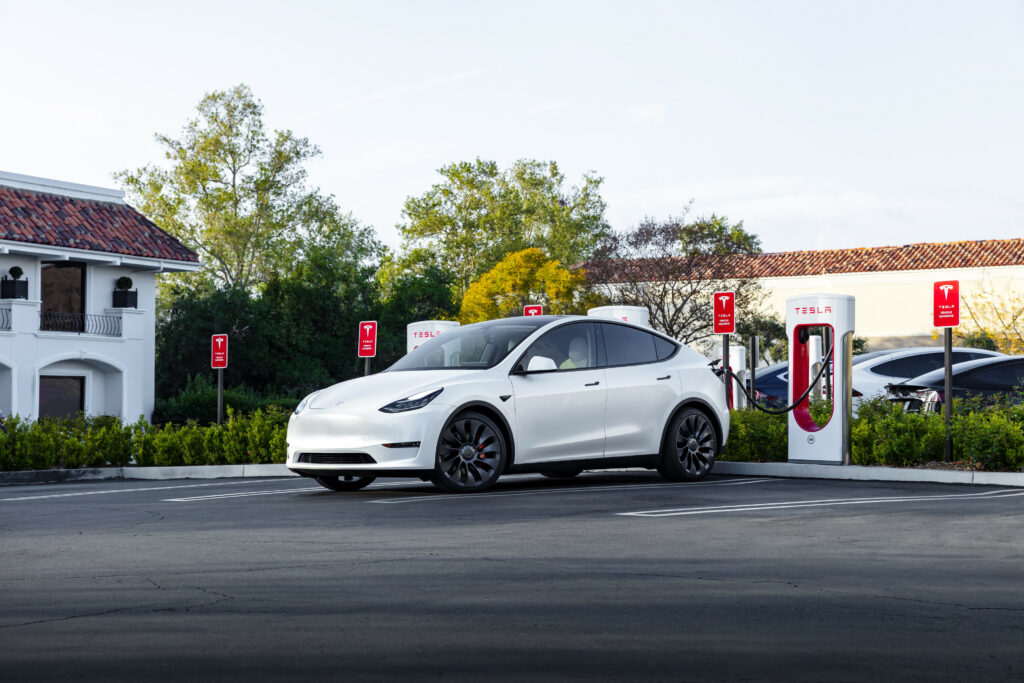
For most of the last decade, Tesla’s Supercharger network was the only nationwide fast-charging network for EV owners. It was long rumored that Tesla was on the verge of opening select Supercharger locations to all EV owners, but it appears that North American Tesla Superchargers will remain a walled garden for now. Tesla has already opened Supercharger access to all in France, The Netherlands, and Norway. Non-Teslas pay a higher price for charging, and Tesla says that will fund the continued growth of the network.

One outcome of the Volkswagen dieselgate debacle was the creation of Electrify America, a VW-funded nationwide charging network in the US. After a rocky start plagued by unreliability and low use, things are looking up for EA. This past summer, EA announced their “Boost Plan” to more than double their current EV charging infrastructure in the United States and Canada. At the end of 2021, EA has completed nearly 800 charging stations with a total of 3,500 charge ports. By the end of 2025, EA plans to have more than 1,800 fast charging stations and 10,000 individual chargers installed.
The all-new Volkswagen ID.4 electric crossover comes with three years of free fast charging at Electrify America stations. Hyundai and Ford are also offering limited free charging incentives for their EVs. As the networks expand, the value of these free charging incentives will grow.
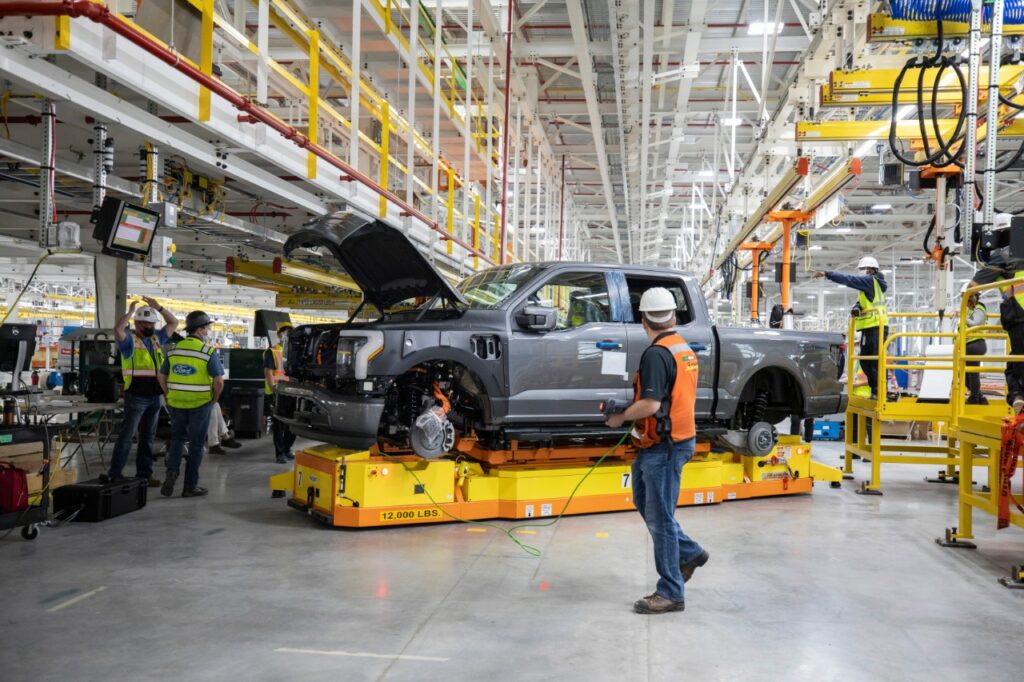
Legacy automakers and EV startups have plans to make public charging easier for their customers. GM announced Ultium Charge 360, a plan that will integrate charging networks for seamless use with all GM vehicles. They’ve established partnerships with EVgo, Blink, ChargePoint and other big names in North America. Furthermore, GM’s new Dealer Community Charging Pro will see dealerships playing an active role in bringing 40,000 level 2 chargers to underserved communities, including rural and urban locations.
Ford’s BlueOval charging network makes plug-and-charge possible for the Mustang Mach-E and future EV models, a nod to Tesla’s plug-and-charge popularity. Ford says that they want charging an EV to be as simple as stopping at a gas station.
By the end of 2023, Rivian’s Adventure Network of chargers will have 3,500 fast chargers installed at 600 sites in North America. Rivian’s brand targets outdoor enthusiasts and overlanding types, so the new network will cater to EV owners who venture off the beaten path. At first, the Rivian Adventure Network will be exclusive to Rivian owners, but the company says they will open it up to other EV brands shortly after. This is a big deal for EV owners looking for zero-emissions wilderness adventures, especially considering that the much-hyped Subaru Solterra all-wheel drive EV barely makes it 220 miles on a charge.
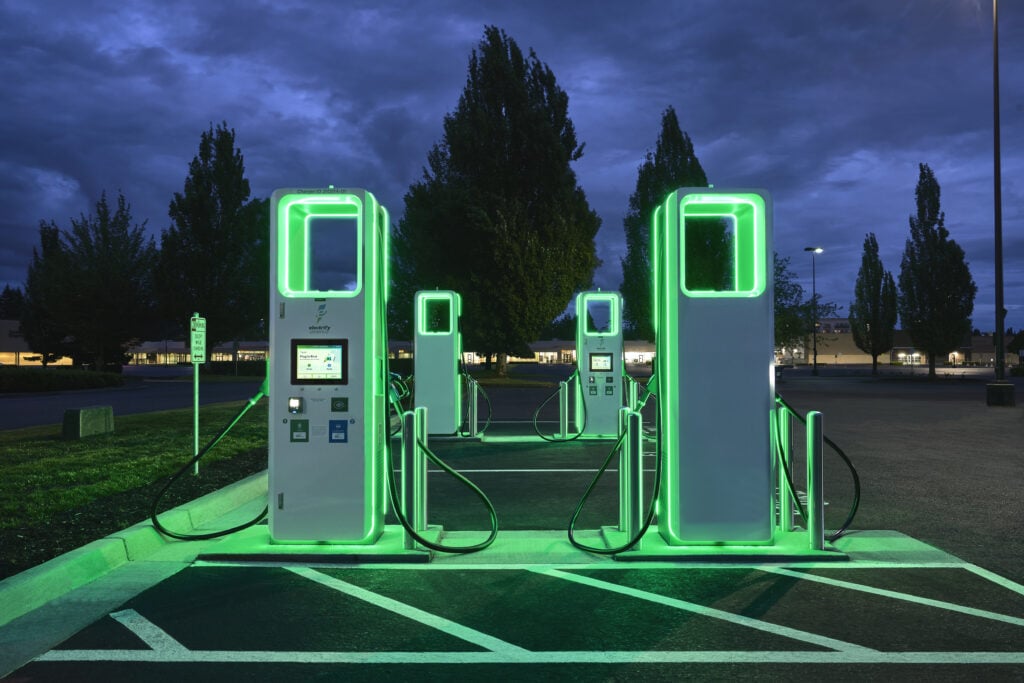
The short answer is no, not for decades, if ever. However, more and more gas stations are adding fast chargers to their parking lots. Sheetz, a popular gas station chain in the East, has been the site of many Tesla Superchargers. In Maryland, one gas station ditched gas entirely for EV charging stations. The new infrastructure bill’s $7.5 billion for EV charging will bring chargers to more gas stations, truck stops and interstate rest areas. The Department of Energy already keeps track of every fast charging station in the nation, and even has a neat map of stations to explore.
Retailers are seeing the benefits of hosting EV charging. Most Electrify America stations are located in Walmart or Target parking lots in close proximity to dining and shopping. Movie theaters and shopping malls often offer free charging for customers. This is a trend we expect to continue, bringing convenience and the occasional free charge to EV owners.
EV charging stations are great for highway adventures, but it’s important to remember that EV owners who rely on public charging will spend far more on charging than those who charge mostly at home. EV drivers who pay for public charging will see a much higher total cost of ownership, possibly even approaching that of a combustion vehicle.
More EV models are making their debut in 2022, and almost all of them charge at over 150 kW. This is great for those wanting to go electric yet dreading long waits at a charger. The next two years will transform the experience of EV ownership in America. With so many new fast chargers coming online and even better models to choose from, EV technology just might be maturing right as American infrastructure catches up with demand.
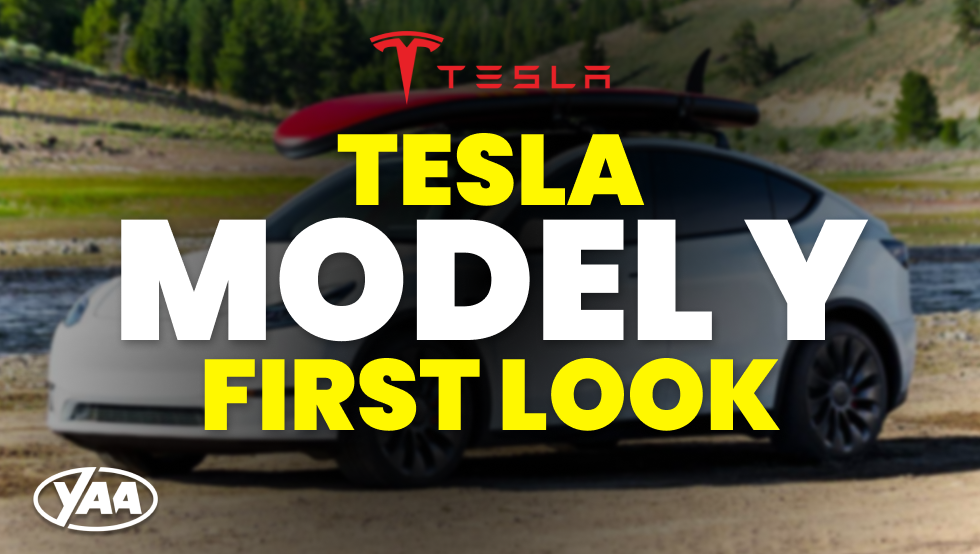

In 2021, Tesla’s one-size-fits-all crossover took the top spot in EV sales with over 132,000 sold in the US through November. The 2022 Tesla Model Y represents the electric giant’s staying power as a force to be reckoned with, and legacy OEMs are late to the game. Tesla recently shared important updates to the Model Y, along with a series of significant price increases. Here’s what you need to know about the 2022 Tesla Model Y.

Tesla’s Model 3 sedan recently became the first electric vehicle to surpass 1 million cumulative deliveries. The car also has some of the highest customer satisfaction ratings, despite low reliability scores. However, there was always one thing in particular that Model 3 owners wanted more of: space. When the Model Y crossover launched in 2019, Tesla offered a solution for those who desired an electric crossover.
Need a family-sized cabin? Want a sporty drive and all-weather confidence? How about class-leading charging speeds and EPA-rated range? The Model Y has these features and a LOT more. If you’re ready to buy a 2022 Tesla Model Y, get in line. Demand has been through the roof. The current backlog of orders shows an estimated delivery window in April-July 2023 for orders placed in July 2022. Upcoming 2022 updates, high customer satisfaction, and the fact that this vehicle is good at almost everything are all reasons for the runaway demand.
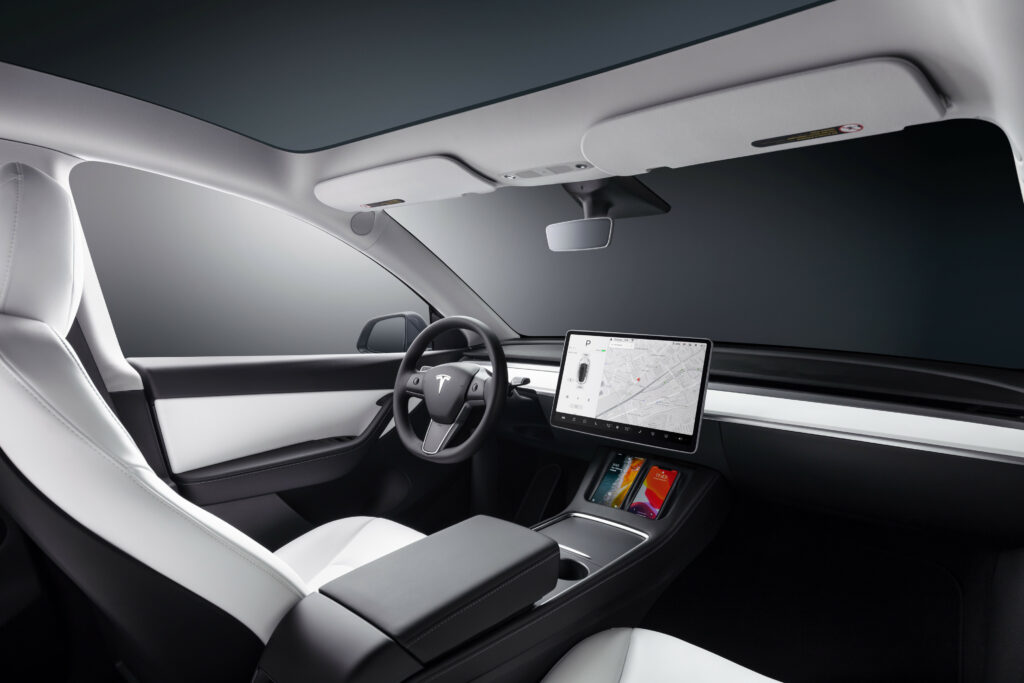
Tesla recently announced a small range increase for the Model Y. The updated figures have the Long Range all-wheel drive base version at 330 miles of combined city and highway driving with the 19” gemini wheels, up from 326 miles. This continues to be the all-electric crossover with the longest range on the market.
The Long Range base trim is listed for $67,190 ($65,990 + $1,200 doc fee). Upgrading to the 20” induction wheels (+$2,000) lowers range to 318 miles. The Performance variant ($71,190) gets 303 miles of range.
All new Model Ys can charge at up to 250 kW, which translates to adding 200 miles of range in just 15 minutes at a Tesla Supercharger. There’s now one more free paint option. Both pearl white multicoat and midnight silver metallic are available at no additional cost. Tesla’s controversial and unfinished Full Self-Driving is unlocked for $10,000 (all Tesla’s are equipped with the necessary hardware for FSD). All in all, a fully-loaded red Model Y Performance with FSD will cost a grand total of $87,190 before taxes.

To date, Model Ys have been built in Fremont, California for the North American market and in China for Europe and Asia. That will soon change with the opening of Giga Texas, Tesla’s brand-new factory and headquarters just outside of Austin.
The first Austin-built Model Y’s are rolling off the production line with a surprise in store. These first Texas-made Model Y’s are all-wheel drive ‘standard range’ Model Y’s with Tesla’s new 4680 tabless battery cells. Tesla is reportedly offering the first batch of this new Model Y variant to customers awaiting orders nearby.
The Model Y Standard Range AWD will cost a few thousand less than the long-range AWD (rumored to be $59,990), but range will be an EPA-rated 279 miles instead of 330. The battery pack has less capacity, with 68 kilowatt-hours instead of the larger 82 kWh pack. Zipping to 60 mph will take 5.0 seconds or so, which is just a hair slower than the long-range variant.
What’s so special about Tesla’s new 4680 batteries? This larger form factor features a streamlined design that is more energy dense and lightweight per unit of energy stored. In fact, Tesla’s 4680 cells are challenging the promise of solid state batteries, an emerging technology that legacy OEMs are betting on.
2022 Model Ys built at Giga Texas will start with a world-first: single castings for the front and rear portions of the frame. Following the introduction of Tesla’s megacasting, 2021 Model Ys are already produced with a single rear casting, which is one huge metal cast that replaces what was previously made of 70 individual parts. Mega-castings bring three important benefits for Tesla and their customers. Improved structural rigidity translates to better crash test performance.
Castings greatly simplify production. The new castings also make sense for the incorporation of an all-new structural battery pack for Tesla’s new 4680 batteries. Tesla is moving away from the ‘skateboard design’ that most automakers use for their battery packs, and is transitioning to battery integration into the frame of the car itself.
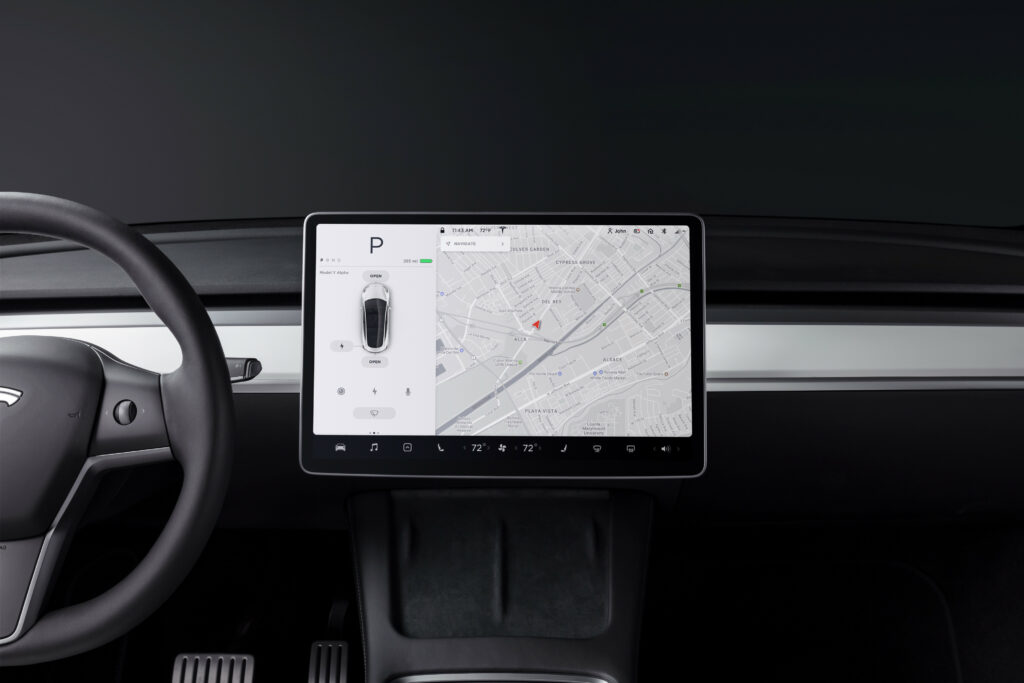
New for 2022, the Model Y is gaining an in-cabin radar that will monitor driver awareness, detect vehicle intrusions, and possibly even alert authorities if a child is left behind in a hot car. It also looks like all new Tesla models will now have the refreshed user interface that the luxurious Mode S and X received in 2021. This new UI enables the driver to customize the infotainment display as desired. Model X, Model S and made-in-China Model Ys have transitioned to a new AMD Ryzen chip for the media computer. The result has been quicker performance for the many apps that are accessible through the infotainment interface. It’s not a guarantee, but the 2022 Model Y built at Giga Texas may include the new AMD chip.
All Tesla’s receive over-the-air updates periodically, a game-changing strategy that’s now spreading through the auto industry. Even years down the road, the Model Y is likely to gain new features and better performance through OTA updates. All you need is a wifi connection.

Rarely does a compact SUV perform like a track car. That’s exactly what you get with the 456 hp Model Y Performance. The Performance is the top-tier trim, cranking out 497 lb-ft of torque and propelling to 60 mph in just 3.5 seconds. It also comes with a lowered suspension and 21” uberturbine wheels. All that power comes with a range penalty, dropping it down to a still-respectable 303 miles.
Even the Model Y Long Range base variant is really fun to drive. With 384 hp and 376 lb-ft of torque, the most affordable Model Y still rockets to 60 mph in just 4.8 seconds. A test drive reveals that the power just keeps building beyond 60 mph. The Long Range has a top speed of 135 mph, and the Performance tops out at 155 mph. It’s easy to get a speeding ticket in this family car. Ground clearance is 6.6”, so off-roading capabilities are limited without modifications.
Some critics claim that Tesla’s are a bunch of one-trick ponies. They go fast in a straight line, but that’s about it. My experience test driving the Model Y has shown otherwise. It’s fun on a curvy road, and it feels well-planted on a variety of road surfaces and weather conditions. It weighs in at 4,416 pounds, so that’s what we’d expect. All Model Ys now include double-paned glass, so road noise is greatly reduced compared to the early Model 3’s, although it’s not as quiet as any of the German luxury cars.

When Tesla unveiled the Model Y, it was met with mixed reactions. Some thought it looked like a bloated Model 3, others saw it as the automaker’s key to world domination. Now that the dust has settled, the Model Y has garnered a devoted fan base of families, track enthusiasts and everything in between.
The Model Y’s broad popularity is attributed to its multifunctionality. It’s a family crossover, but it’s also a performance car. Inside, passengers are quite comfortable. There’s exceptional second-row leg and shoulder room. Thanks to a standard glass panoramic roof (without a sunshade), head room is more than enough, even for tall passengers. The rear seats recline slightly in case anyone wants to doze off while gazing up at the sky. An optional third row of seats can be tucked into the cargo area for an extra $3,000. It’s such a tight fit that you might as well go for a Model X if you really need a three-row SUV.
The rear cargo area is accessed through a power liftgate that opens up to 30 cubic feet with the second row in use. With those seats flat, there’s a whopping 68 cubic feet of cargo space. And unlike the class-competing Volkswagen ID.4, there is a large, deep front trunk (frunk!) that is excellent for storing charging cables, smelly shoes or pungent takeout food.

All Teslas include vegan leather at all trim levels. Black comes standard, but white is available for $1,000. Ownership experience shows that the white seats can stain, particularly due to excessive wearing of blue jeans. Yes, Tesla can send a Roadster into orbit, but can’t stain-proof their luxury seats.
The speedometer, navigation, climate controls, audio controls and most other features are accessed through the 15.5” touchscreen centrally mounted on the Model Y’s dash. Speaking of audio, there’s a 14-speaker premium sound system with two amps and a subwoofer. The immersive sound is a winner for audiophiles. There’s no gauge cluster like you’ll find in the Model S and X, but most drivers say they get used to it quickly. Infotainment and navigation are accessed through Tesla’s Premium Connectivity subscription, which costs $10 per month after the trial period.
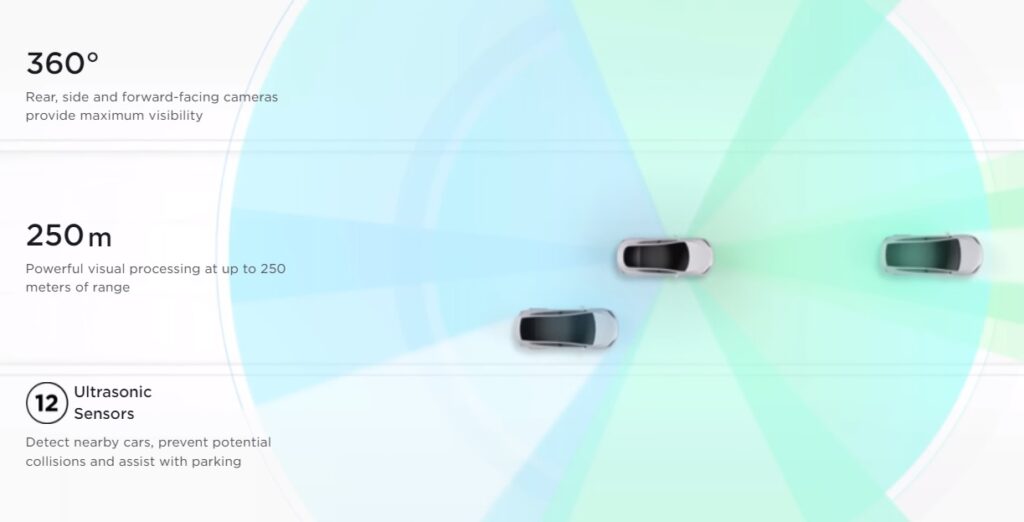
All Tesla cars come equipped with Autopilot, Tesla’s basic driver assist software. Standard autopilot is a combination of lane centering and adaptive cruise control, and it’s one of the best in the industry. If you’re expecting to hop in your car, take a snooze and be whisked away to work, you’ll be disappointed.
Tesla’s ‘Full Self Driving’ (FSD) costs an additional $12,000, but not all who pay for it even have access to it. Presumably fearing liability and regulatory challenges, Tesla requires all drivers who want FSD early access to pass a driving test. The test is conducted over about a week, during which the car carefully monitors patterns of acceleration, braking, following distance and more. Suffice to say, thousands of Tesla owners are angry about this surprise requirement, and many are locked out of their $12,000 purchase for the time being.
For those who do have access to the Beta version of FSD, it’s still not a fully-autonomous system. Even Tesla itself admits it is level 2 autonomy, which means that the driver must be prepared to take control of the vehicle at all times. Musk and his team promise that full autonomy (level 3 and above) is right around the corner, but they’ve been saying that for almost five years now.

The Model Y is the most popular EV in America, and it has the specs and performance to back it up. With up to 330 miles of range, some of the fastest charging in the industry and software that just keeps getting better, there’s plenty to love. It’s not a cheap car, and whether or not EV incentives will once again apply to Tesla’s is yet to be determined. Tesla keeps raising prices, as do nearly all automakers. How the Model Y’s value compares to other 2022 EVs will depend on how competitors like the Ford Mustang Mach-E and Volkswagen ID.4 set their pricing for the upcoming model year.
If you’re ready to take the dive, you can reserve a Model Y with a $250 nonrefundable deposit. For the Long Range Model Y with the base Gemini wheels, expect to wait 11 months for delivery. If you add any upgrades, delivery is ‘only’ 7 months away. On top of that, Tesla is constantly upgrading their vehicles both in production and through OTA updates. If you order now, the car you get in several months time may very well have an even better range and further updated tech. Tesla’s mastery of the latest and greatest is something to consider when shopping for an electric crossover. This segment is getting crowded fast, but the 2022 Tesla Model Y remains one of the best.


This year’s LA Auto Show marks a turning point for the auto industry. What seemed unlikely a decade ago is now very real: like it or not, OEMs are committed to electrification. There are a whole host of reasons for the shift, from international climate initiatives and clean transport incentives, to simply responding to Tesla overtaking market share. Every automaker has its own strategy. Some are going it alone, while many are laying the groundwork for new partnerships with competitors. And as 2021 comes to a close, all OEMs have at least this in common: they’re planning to electrify and they’re spending a LOT of money doing it. Here are the latest updates on the major players in the North American auto market.
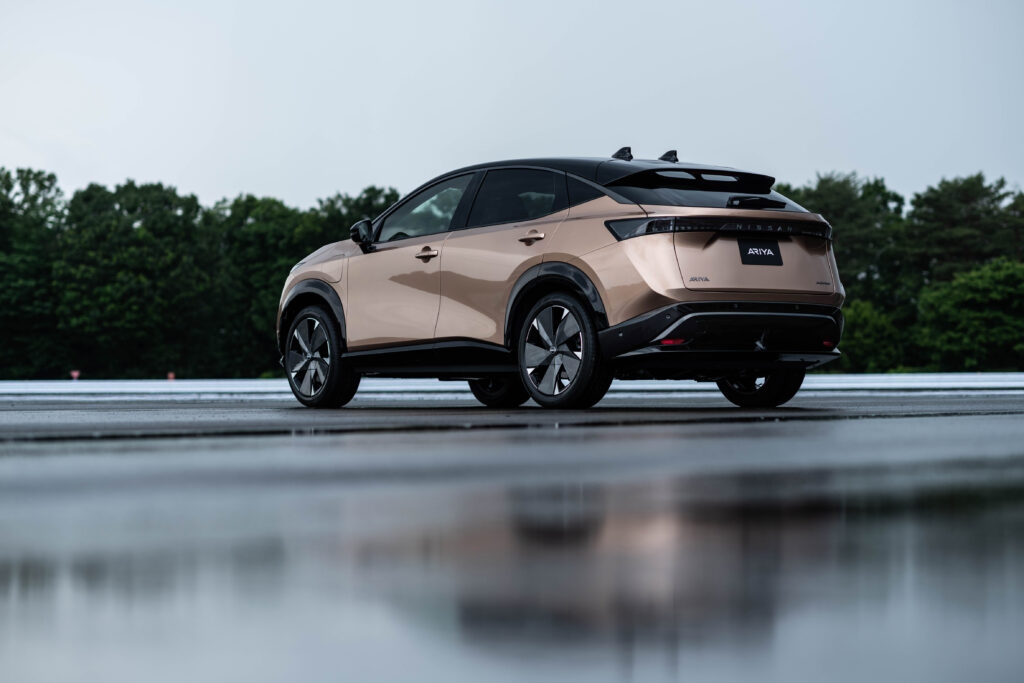
The 2011 Nissan Leaf changed the world and spurred interest in electrified transportation. The Leaf led EV sales for several years before falling behind the likes of the Chevrolet Bolt and the Tesla lineup. The turmoil of Nissan’s leadership surely didn’t do electrification any favors. But here we are, a decade after they brought EVs to the masses, and Nissan has unveiled the successor to the Leaf, the 2023 Nissan Ariya. This compact crossover is the start of something bigger.
The Japanese OEM just announced ‘Ambition 2030’, a roadmap for electrification. In just five years time, Nissan says it will spend at least $17.6 billion in EVs and battery tech. That includes the engineering and production of its own solid-state battery by 2028, which would be a major feat for any automaker. Another part of the investment is a new $1.3 billion electric vehicle hub in England where it will build an all-electric crossover. By 2030, Nissan says that half of their lineup will be EVs. Will it be enough to reclaim EV dominance?

Ford is determined to catch up to Tesla, and they’re not afraid to say that publicly. Having acknowledged their status as an EV underdog, Ford isn’t making any excuses. Instead, they’re writing checks. The Detroit giant is spending $22 billion through 2025 to electrify its lineup, starting with the 2021 Mustang Mach-E, a controversially-named top seller and Tesla Model Y competitor.
Next up, the F-150 Lightning. Ford is so confident in its electrification strategy that it’s giving its best-selling model the EV treatment. With over 200,000 reservations in the books, it looks like Ford has their work laid out for them. Ford says that F-150 Lightning reservations placed today may not be delivered until 2024 due to order backlogs.
In an even greater leap towards an EV future, Ford announced BlueOval City, which they call Ford’s “largest, most advanced, most efficient auto production complex.” The massive facility will be constructed on a nearly 6-square-mile site in Tennessee. It will produce F-series electric trucks and Ford’s future battery platforms. Moreover, a new BlueOval SK Battery Park is to be built in Kentucky with the goal of powering a new lineup of Ford and Lincoln EVs.
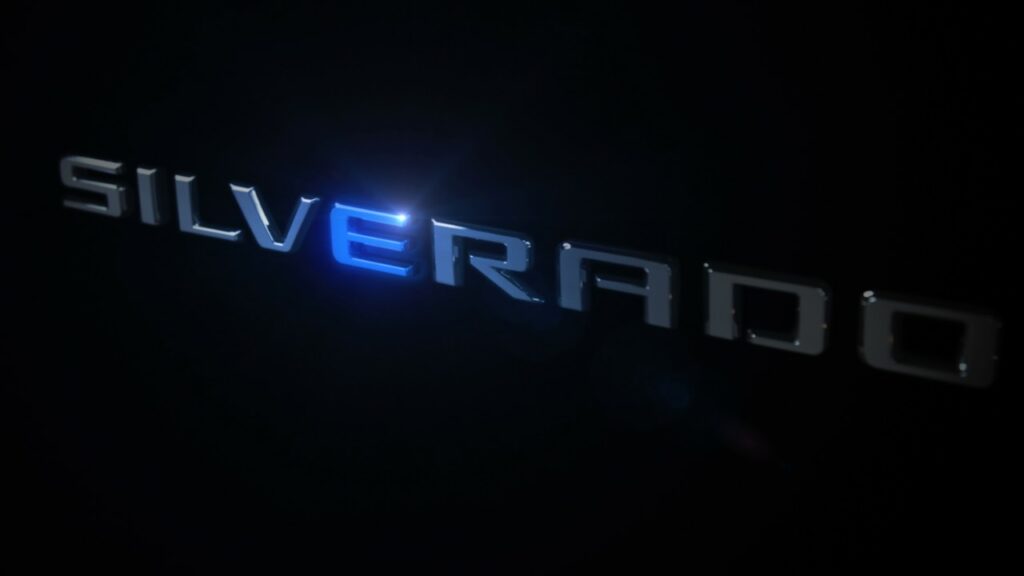
GM plans to stop selling combustion vehicles by 2035, so that means one of two things: GM is either going all-in with EVs, or they plan to go out of business. Jokes aside, the General is playing the long game. GM has been investing heavily in the development of its proprietary Ultium battery technology as it prepares to launch a slew of EVs.
Unless you’ve been living under an automotive rock for the past year, you probably know that the Chevy Bolt has been going through some rough times to say the least. Battery fires have been traced to problems with how LG Energy Solutions engineered the battery pack for GM. There’s a stop-sale on new Bolt’s, and all Bolt owners are advised to park away from buildings and limit charging to 80%. The automaker has to spend $1.8 billion fixing the Bolt recall, so I’m sure they will want to avoid similar problems going forward. GM’s Bolt blunder is certainly going to turn a lot of folks away from EVs, so here’s hoping that their new Ultium platform can convince the public that their EVs are worth a test drive.
2021 has arguably been the turning point for the automotive industry. Now that the future points towards electrification, OEMs like GM are increasing their planned investments in EVs and their infrastructure ecosystem. For example, GM recently announced that they are increasing their commitment to develop EVs and autonomous vehicles by $8 billion additional dollars by 2025, amounting to a total commitment of $35 billion. In a recent press release, GM shared that they intend for combustion-powered sales to fuel their growth strategy. The roadmap includes working with partners to build new battery facilities, creating a charging network, and converting the entire Detroit-Hamtramck Assembly center into ‘Factory Zero’, an all-EV production center with over 4 million square feet.
The Cadillac brand will be exclusively electric by 2030, and the highly-praised Cadillac Lyric EV is almost here. And of course there’s the $100,000+ GMC Hummer EV coming out next year. But we’ll know Chevrolet is serious about EVs when there’s an electric Silverado, which is scheduled to arrive in 2023-2024. The automaker is relying on the new Ultium batteries to produce a desirable electric truck with a range of up to 400 miles on a charge at a compelling price point.
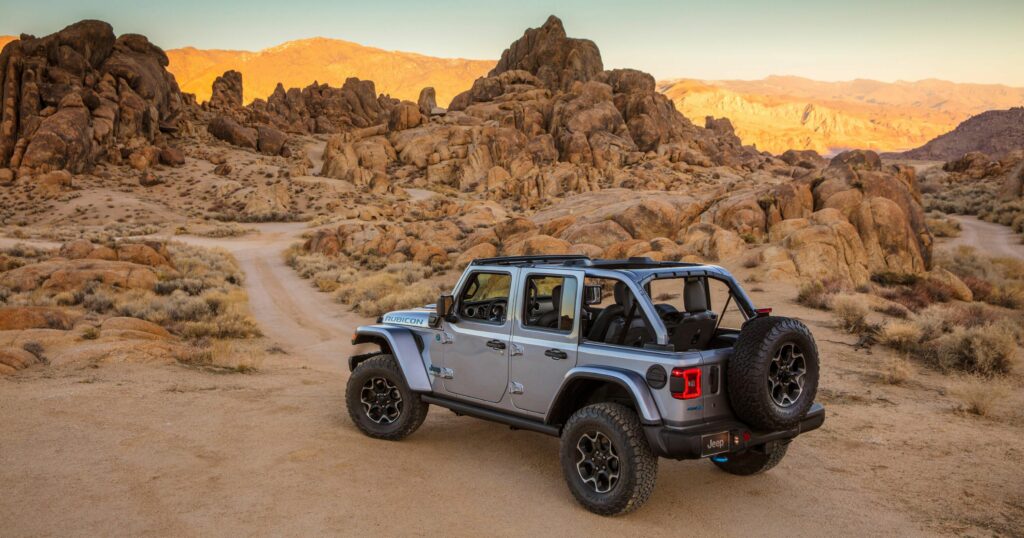
Now that Fiat Chrysler Automobiles (FCA) and PSA Group (European brands Peugeot, Citroen and more) have merged to create Stellantis, the conglomerate is trying to agree on a path forward towards electrification. Stellantis CEO Carlos Tavares recently complained to Reuters about the added costs of engineering and building EVs, which isn’t surprising considering that subsidiary Ferrari publicly says they aren’t very interested in electrification.
Despite the dread of some of the leadership, Stellantis is far more committed to EVs than FCA was on its own. At ‘Stellantis EV Day 2021’, the group announced $35.5 billion in EV investment through 2025. Every Jeep will have an electrified option by 2025, and an electric Ram 1500 pickup truck and Dodge performance EV will hit the roads by the same year. Their target for North America is 40% electrification (including plug-in hybrids) in 2025.
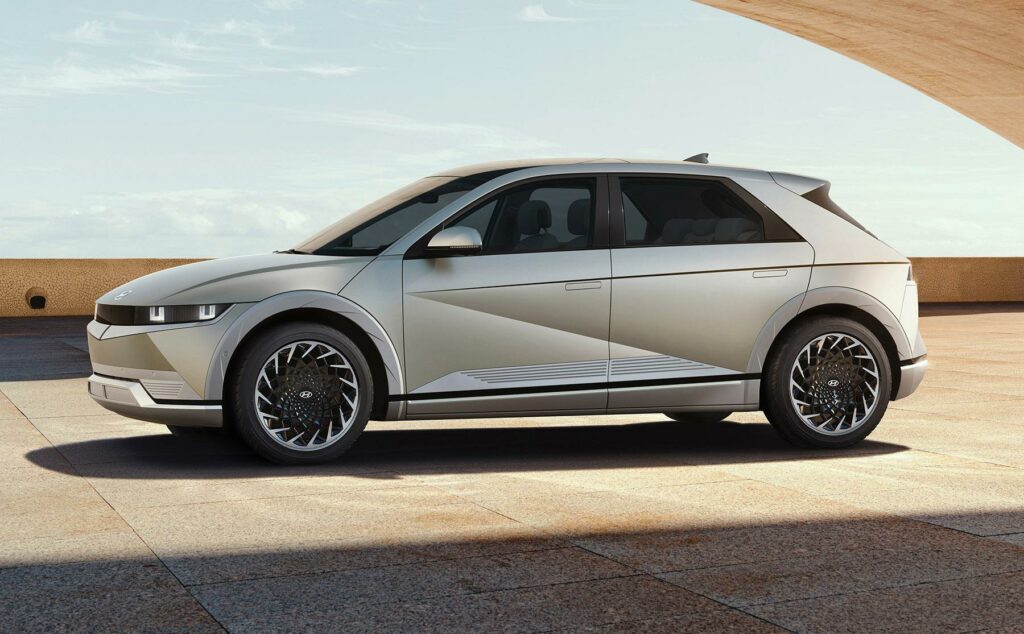
Not only is Hyundai-Kia on a roll, they are investing heavily in American manufacturing for their rapidly electrifying lineup. They recently shared a $7.4 billion investment in America between now and 2025, with the goal of producing American-made battery electric vehicles. Hyundai-Kia is also investing heavily in autonomous vehicle development and urban air mobility. You know, as in flying cars. By 2025, they plan to have 23 EVs and hydrogen fuel cell vehicles on the market, with more to follow. So there’s a lot to look forward to from the group.
Hyundai’s retro-inspired yet very futuristic IONIQ 5 has garnered attention at the 2021 LA Auto Show along with its sibling, the Kia EV6. Hyundai’s Kona EV has sold well, but it doesn’t turn any heads. The next generation of electric Hyundai’s and Kia’s are sure to change that if the Kia EV9 and Hyundai IONIQ 7 are any indication of what’s to come.
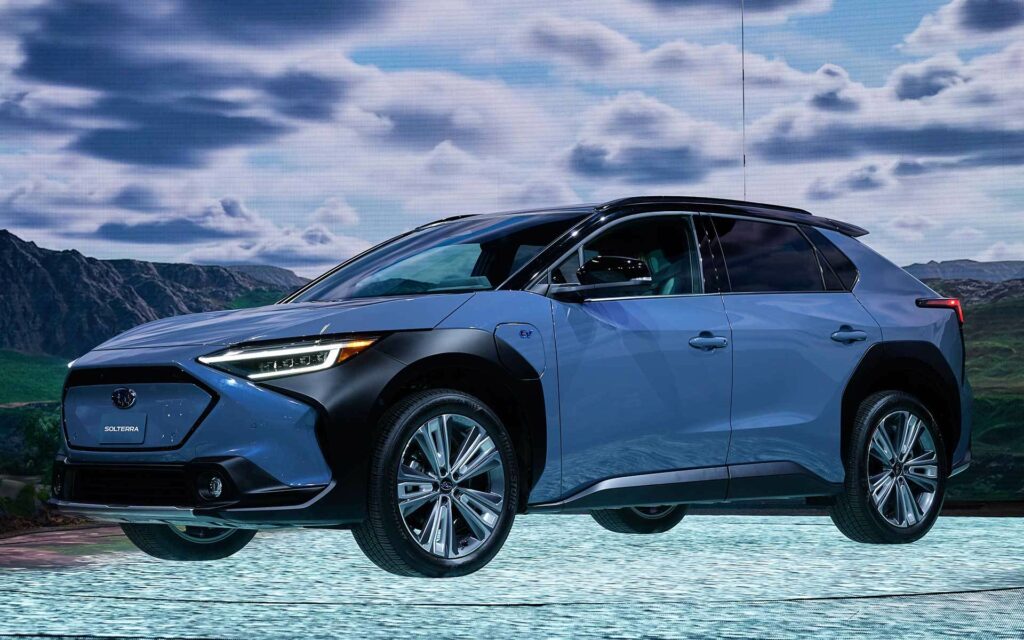
Honda doesn’t have a single dedicated EV in the North American market, but has had success with its funky Honda ‘e’ in Europe. Nevertheless, Honda has big plans. CEO Toshihiro Mibe recently shared that the automaker is aiming for 2040 vehicle sales to be 100% EVs and hydrogen fuel cell vehicles. They expect that figure to reach 40% by 2030. As far as investment goes, Honda is putting their money where their mouth is and investing $46.3 billion in research and development initiatives, including electrification, over the next six years. But there’s a long way to go. In 2020, Honda sold 4.46 million cars globally, but only 14,000 were electric.
When will Honda begin to make a splash in the American EV market? Well, no sooner than late 2023. Honda’s pride and joy is the upcoming 2024 Prologue EV, a SUV that will use GM’s Ultium battery platform. You read that right. Honda is depending on GM to deliver the most important part of their most important car of the decade. The EVs in development will surely have Acura-branded counterparts too.
In 2025, Mazda plans to introduce a unique EV platform, ‘SkyActive EV Scalable Architecture.’ For now, Mazda only intends to bring three full EVs to the American market by 2025. The company’s first, the MX-30, is out now in California and includes a very insufficient estimated range of 100 miles. For perspective, a 2013 Nissan Leaf got better miles than that. We’ll see if Mazda gets serious about EVs with an accelerated timeline.
Subaru has been receiving plenty of attention as of late for its fruitful collaboration with Toyota to produce a new EV platform that both automakers will use for the time being. The 2021 LA Auto Show has featured the unveiling of the first all-electric all-wheel drive Subaru, the 2023 Subaru Solterra. It’s the sister to Toyota’s new bZ4X EV. Subaru is playing a bit of catch up in the electrified all-wheel drive space, but they have a plan. They recently announced plans for a new $272 million dollar R&D center in Tokyo that will employ some 2,800 people with the goal of facilitating the push to EVs.

In 1995, Toyota made headlines when it unveiled a concept car at the Tokyo Auto Show that was powered by both combustion and electric motors. This concept would go on to become the first mass-produced hybrid, the 1997 Toyota Prius. 25 years later, the hybrid pioneer is lagging behind other automakers in the push to further electrify. As recently as this year, Toyota and Lexus have frequently trash talked EVs. From claiming that they prefer “self-charging hybrids” (there’s no such thing!!!), to investing heavily in the incredibly inconvenient hydrogen-powered Mirai, Toyota has kicked the ball down the road for the last decade when it comes to electrification. But things started to accelerate in 2019 when Toyota expanded its existing partnership with Subaru to include the development of a battery electric vehicle.
At the 2021 LA Auto Show, we got our first look at the fruits of the Toyota-Subaru collab. On Toyota’s side, the result is a compelling EV with an eye-rolling name: the 2022 Toyota bZ4X. Apparently bZ stands for beyond zero, as in zero emissions. Subaru simultaneously unveiled its first all-electric all-wheel drive vehicle, the Solterra.
So Toyota is off to the races. What’s next in their roadmap to electrification? In October, Toyota announced plans to invest $3.4 billion in US-built batteries through 2030. Globally, Toyota says it’s investing $13.5 billion in battery development, with the headline goal of reducing battery costs by 50% by 2030. They’ve also established a partnership with Panasonic for battery R&D. Toyota plans to expand the Beyond Zero line of cars into seven different models by 2025, and an additional eight EVs will be introduced into other Toyota segments. If all goes as planned, Toyota’s lineup will be hardly recognizable five years from now.
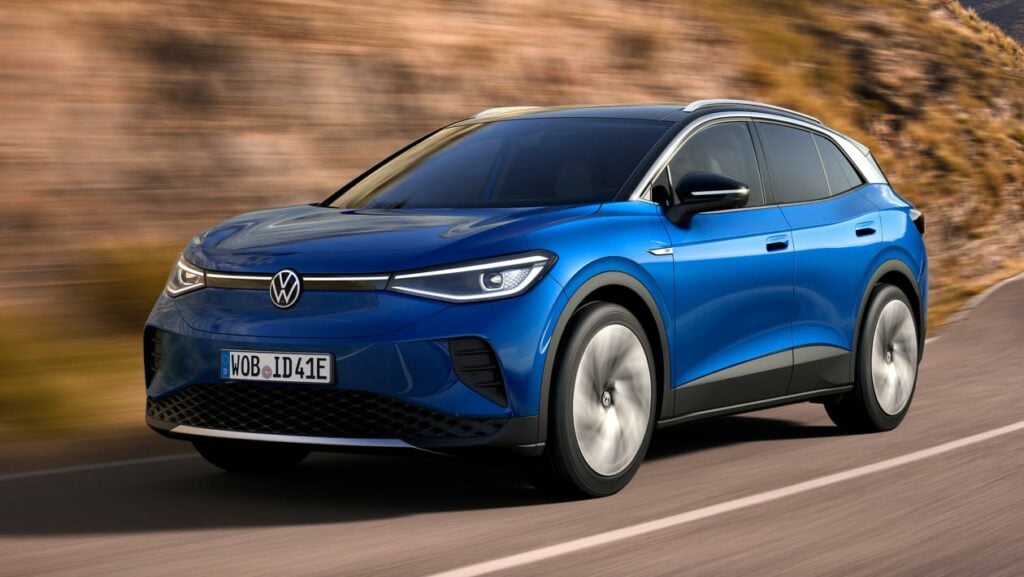
In Europe, German EVs are arguably the face of electrification. While it’s true that Tesla and Asian EVs are quickly making inroads, Volkswagen, Audi and Porsche are doing very well in the European EV market. The irony? Volkswagen Group’s electric leadership came directly out of the dieselgate emissions scandal. Following the debacle, VW intended to rebrand itself as an automaker committed to righting wrongs and going green once and for all. And to a large extent, the rebranding has been a success.
VW Group has allocated over $86 billion for technology development between now and 2025. CEO Herbert Diess says that nearly all of it will be spent on electrification initiatives. In fact, he recently shared with CNBC that VW aims to have at least 50% of total vehicle sales to be electric by 2030.
Here in the US, VW has already started converting a large portion of its Chattanooga, Tennessee factory into a production facility for American-made ID.4 electric crossovers. The conversion will cost about $800 million. The Chattanooga factory recently celebrated its 10th anniversary, and over 3,800 people are employed there.
The Porsche Taycan has seen immense success and rave reviews. It’s the top-selling non-SUV Porsche of 2021, despite a sticker price that stretches from $94,000 to $188,000. Porsche, a subsidiary of Volkswagen Group, has led the electrification of luxury performance in Europe. They’re also investing in a network of public fast-chargers and destination chargers. At least 7,500 charging points are going to be available worldwide by 2025. This is all part of Porsche’s plan to spend about $17 billion on electrification through 2025.
BMW has been a bit of an internal combustion holdout. Not long ago, CEO Oliver Zipse declared that gas engine development will continue and that demand for internal combustion “will remain robust for many years to come.” However, even Zipse says that he expects BMW’s EV sales to grow by at least 50% year-over-year for at least the next few years. By 2025, they expect 25% of BMW’s sales to be EVs. What about investment? The latest tally shows BMW has plans to invest $23.8 billion in battery technology and EVs. They seem to be dabbling in hydrogen fuel cells too, a technology that has yet to show scalable promise.
Mercedes-Benz maker Daimler announced in July that it intends to invest $47 billion in electrification by 2030, with the explicit goal of taking on Tesla. Daimler says that the overhaul of operations could result in job cuts. Most notably, the transition will result in an 80% drop in combustion engine investments by 2026, just five years from now. In essence, Mercedes-Benz is going all in for EVs. Daimler recently purchased British electric motor engineering firm YASA Limited, and is making strides towards battery development.

Legacy OEM’s have a solid shot at catching up to Tesla, but there’s also the possibility that we’re witnessing a great realigning of sorts in the North American auto industry. As it stands today, Ford, Volkswagen Group, GM and Hyundai-Kia are best positioned to dominate the EV industry alongside Tesla, but all OEM’s are throwing money and infrastructure at electrification. What do you think the outcome will be? Will the big three and German giants be as powerful in a decade as they are now? Only time, money and a battery-powered arms race will tell.